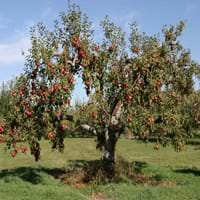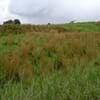Life Span
Perennial
Perennial
Origin
United States, Northeastern United States, Mid-Atlantic United States, Southeastern United States, North-Central United States, Central United States, South-Central United States, Texas
Eastern Europe, Southern Europe, Russia/Siberia, Southern Asia, Western Asia
Types
Virginia water horehound
Not avaialable
Number of Varieties
Not Available
Habitat
Along Railroads, Barren waste areas, Hill prairies, Mined land, Pastures, Roadsides, Rocky glades, Sandy areas, Upland, Upland clay prairies, Upland sand prairies, Upland sandy savannas, Upland savannas, Upland soils
Hillside, Mountain Slopes, Temperate Regions
USDA Hardiness Zone
5-8
5-8
Sunset Zone
Not Available
2a, 2b, 3a, 3b, 7
Habit
Clump-Forming
Oval or Rounded
Flower Color
Not Available
White, Pink
Flower Color Modifier
Bicolor
Bicolor
Fruit Color
Not Available
Red
Leaf Color in Spring
Green
Green
Leaf Color in Summer
Light Green
Green
Leaf Color in Fall
Orange, Tan, Brown
Green
Leaf Color in Winter
Tan, Sandy Brown
Light Green
Leaf Shape
Grass like
Oblong
Plant Season
Summer, Fall, Winter
Spring, Fall
Sunlight
Full Sun, Partial Sun, Partial shade
Full Sun, Partial Sun, Partial shade
Type of Soil
Loam, Sand
Clay, Loam
The pH of Soil
Acidic, Neutral, Alkaline
Acidic, Neutral
Soil Drainage
Well drained
Well drained
Bloom Time
Early Fall, Fall
Early Spring, Spring
Tolerances
Pollution, Drought
Drought
Where to Plant?
Ground
Ground
How to Plant?
Divison, Root Division, Seedlings
Grafting, Seedlings, Transplanting
Plant Maintenance
Medium
Medium
Watering Requirements
Average Water Needs, Medium
Medium
In Summer
Lots of watering
Lots of watering
In Spring
Moderate
Moderate
In Winter
Average Water
Average Water
Soil pH
Acidic, Neutral, Alkaline
Acidic, Neutral
Soil Type
Loam, Sand
Clay, Loam
Soil Drainage Capacity
Well drained
Well drained
Sun Exposure
Full Sun, Partial Sun, Partial shade
Full Sun, Partial Sun, Partial shade
Pruning
Remove damaged leaves, Remove dead branches, Remove dead leaves
Remove damaged leaves, Remove dead branches, Remove dead leaves
Fertilizers
All-Purpose Liquid Fertilizer
All-Purpose Liquid Fertilizer
Pests and Diseases
Red blotch
Black rot, Leaf spot, Scab
Plant Tolerance
Drought
Drought
Flowers
Insignificant
Showy
Flower Petal Number
Single
Single
Foliage Texture
Fine
Medium
Foliage Sheen
Matte
Matte
Attracts
Birds, Butterflies
Birds
Allergy
Pollen
Mouth itching, Throat itching
Aesthetic Uses
Not Used For Aesthetic Purpose
Not Used For Aesthetic Purpose
Beauty Benefits
Not Available
Not Available
Edible Uses
Insignificant
Yes
Environmental Uses
Air purification, Food for birds, Wildlife
Air purification
Medicinal Uses
Back pain, Diarrhea, Frostbite, Itching, Piles, Sore Eyes, Sore throat
Cancer, constipation, Diabetes, Diarrhea, Dysentry, Fever, Heart problems, Tooth ache
Part of Plant Used
Root, Seeds, Stem
Fruits
Other Uses
Cattle Fodder, Used As Food, Used as Ornamental plant
Used As Food, Wood is used for making furniture
Used As Indoor Plant
No
No
Used As Outdoor Plant
Yes
Yes
Garden Design
Dried Flower/Everlasting, Wildflower
Edible, Feature Plant, Fruit / Fruit Tree, Topiary / Bonsai / Espalier
Botanical Name
ANDROPOGON virginicus
MALUS domestica 'Red Delicious'
Common Name
Broomsedge, Broomsedge Bluestem
Apple, Red Delicious Apple, Red Eating Apple
In Hindi
Broomsedge grass
लाल स्वादिष्ट सेब
In German
broomsedge Gras
Red Delicious
In French
broomsedge herbe
Red Delicious
In Spanish
hierba Broomsedge
Manzana Red Delicious
In Greek
Broomsedge γρασίδι
Red Delicious μήλο
In Portuguese
Broomsedge grama
Red Delicious apple
In Polish
Broomsedge trawy
Red Delicious jabłko
In Latin
Broomsedge herba
Red Delicious apple
Phylum
Magnoliophyta
Magnoliophyta
Class
Liliopsida
Magnoliopsida
Clade
Angiosperms, Commelinids, Monocots
Angiosperms, Eudicots, Rosids
Tribe
Andropogoneae
Not Available
Subfamily
Panicoideae
Not Available
Number of Species
Not Available
Not Available
Season and Care of Broomsedge and Red Delicious Apple
Season and care of Broomsedge and Red Delicious Apple is important to know. While considering everything about Broomsedge and Red Delicious Apple Care, growing season is an essential factor. Broomsedge season is Summer, Fall and Winter and Red Delicious Apple season is Summer, Fall and Winter. The type of soil for Broomsedge is Loam, Sand and for Red Delicious Apple is Clay, Loam while the PH of soil for Broomsedge is Acidic, Neutral, Alkaline and for Red Delicious Apple is Acidic, Neutral.
Broomsedge and Red Delicious Apple Physical Information
Broomsedge and Red Delicious Apple physical information is very important for comparison. Broomsedge height is 60.96 cm and width 30.48 cm whereas Red Delicious Apple height is 460.00 cm and width 460.00 cm. The color specification of Broomsedge and Red Delicious Apple are as follows:
Broomsedge flower color: Not Available
Broomsedge leaf color: Green
Red Delicious Apple flower color: White and Pink
- Red Delicious Apple leaf color: Green
Care of Broomsedge and Red Delicious Apple
Care of Broomsedge and Red Delicious Apple include pruning, fertilizers, watering etc. Broomsedge pruning is done Remove damaged leaves, Remove dead branches and Remove dead leaves and Red Delicious Apple pruning is done Remove damaged leaves, Remove dead branches and Remove dead leaves. In summer Broomsedge needs Lots of watering and in winter, it needs Average Water. Whereas, in summer Red Delicious Apple needs Lots of watering and in winter, it needs Average Water.





